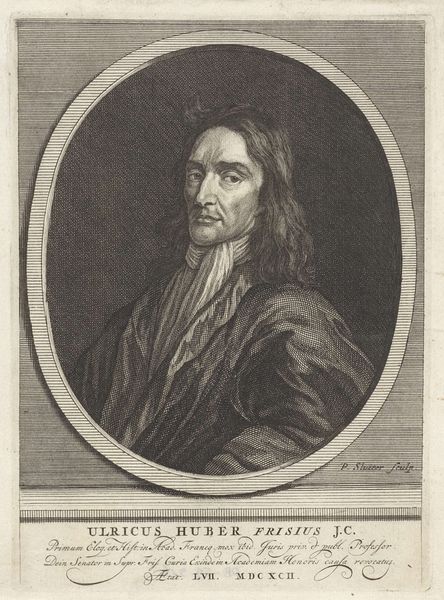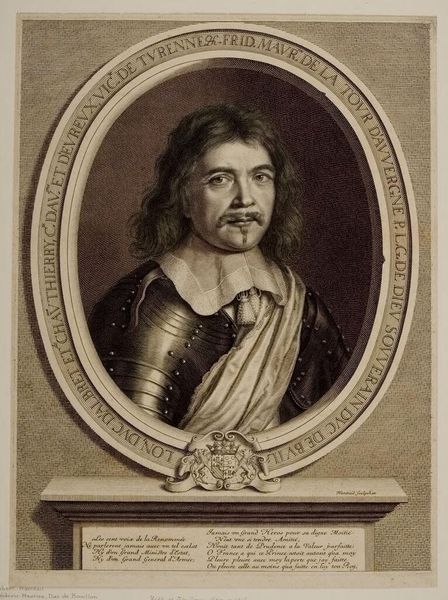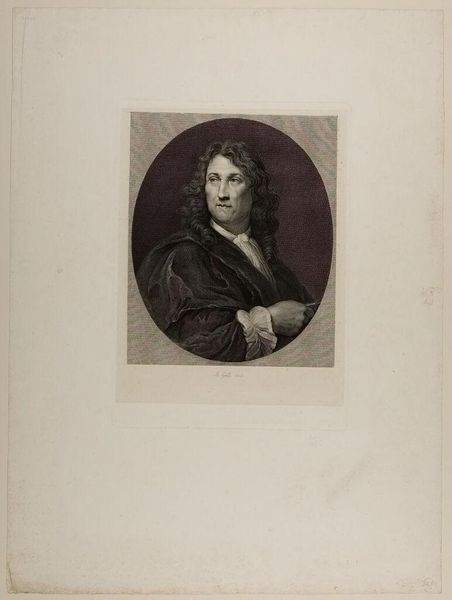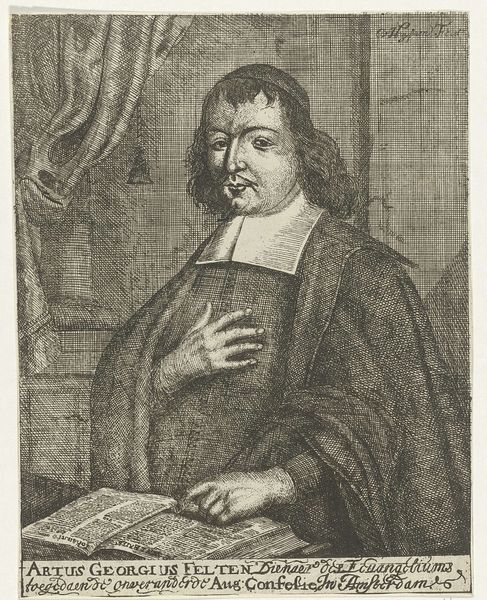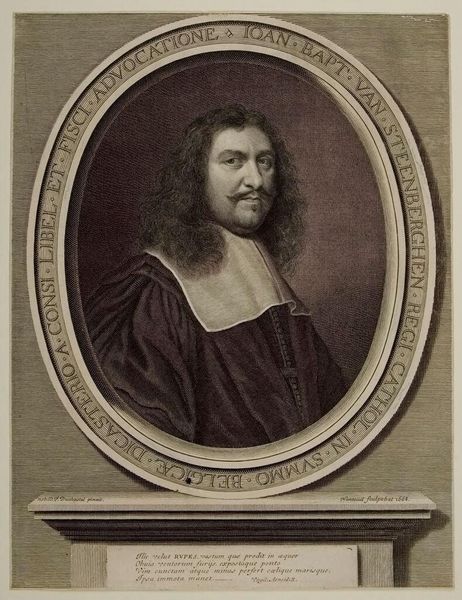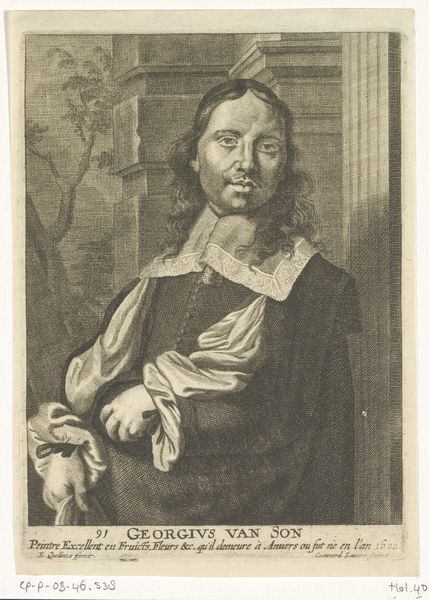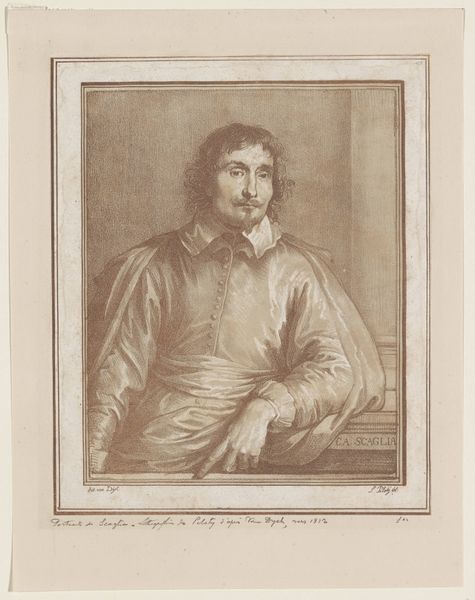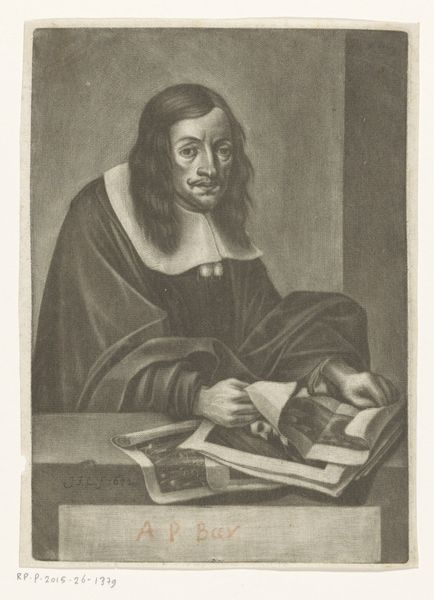
print, engraving
#
portrait
#
baroque
#
dutch-golden-age
# print
#
charcoal drawing
#
archive photography
#
historical photography
#
line
#
engraving
Dimensions: height 215 mm, width 154 mm
Copyright: Rijks Museum: Open Domain
Curator: I find myself immediately drawn to the subject's hand, extended as if in scholarly discourse. The subtle play of light there is just remarkable. Editor: Indeed, the expressiveness of the hand contributes significantly to the portrait. We are looking at "Portret van Johannes van der Spelt", an engraving crafted sometime between 1663 and 1698 by Bernard Vaillant. It's a stunning example of portraiture from the Dutch Golden Age, capturing van der Spelt's essence as a respected doctor in Leiden. Curator: Considering the socio-political status of physicians at the time, how does this representation either reinforce or challenge the perception of their authority? Editor: That's an interesting point! Vaillant strategically used techniques such as Baroque style with delicate lines to reinforce a learned yet modest public persona of Van der Spelt as a physician in the thriving Leiden University of the era. Notice how he's not adorned in extravagant clothing, but rather presents himself in a manner befitting his scholarly and civic roles. Curator: You know, the way the light falls on his face creates a certain intimacy, inviting us to engage with his intellect and experience. And even if his hand draws attention to knowledge, a key semiotic element that helps deliver the essence of his character, I believe that his pose exudes humility in line with Calvinistic modesty that predominated at the time in the Netherlands. Editor: Perhaps the artwork was deliberately positioned somewhere in his house or office. What kind of power dynamic was in play, do you suppose, with viewers looking at him there? Curator: It's plausible the print hung in a location accessible to colleagues and even some patients. To display a work such as this one would bolster the prestige associated with van der Spelt's social status in this context. Editor: It really pulls me into an older era, that's for sure! This deep dive into Bernard Vaillant’s portrait and times has highlighted the nuanced visual strategies deployed during the Dutch Golden Age. Curator: I agree, it makes us think about what art can communicate when you combine that visual and social information together.
Comments
No comments
Be the first to comment and join the conversation on the ultimate creative platform.



